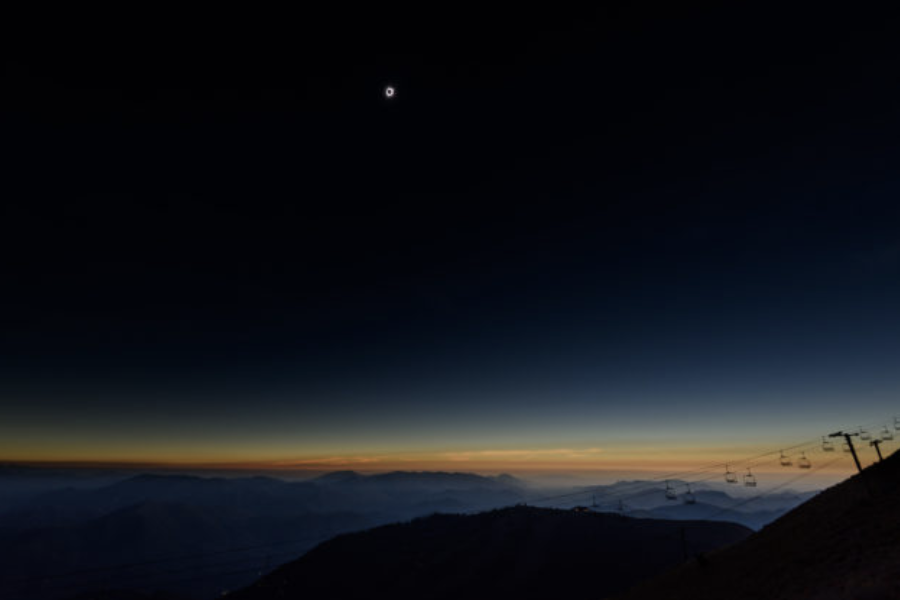
After 7 long years, the moon’s shadow will cross over the United States once again this upcoming Monday, April 8th. The total solar eclipse will pass over the Eastern part of the United States, starting its journey in Mexico, from Texas to Maine, and finally ending through Canada.
What is a solar eclipse?
A solar eclipse occurs when the Moon passes between the Sun and Earth at just the right moment. The position of these celestial objects causes the Moon to cast a shadow onto the Earth. This either fully or partially blocks the Sun’s light on some parts of the planet. For individuals who are in that shadow, the sun seems to be completely blocked for a few minutes as the moon traverses over.
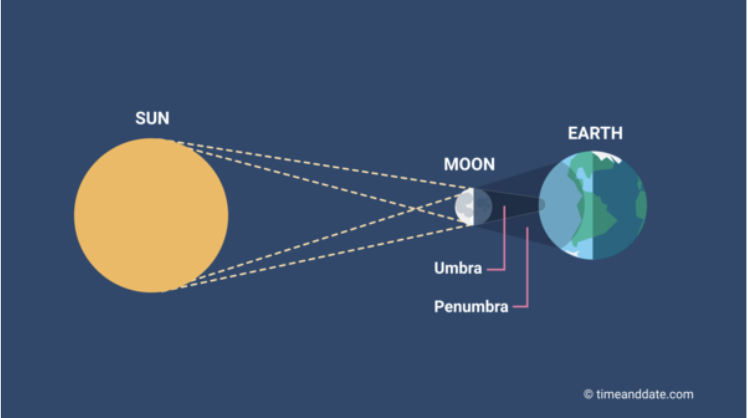
Now you might be wondering, if a solar eclipse occurs when the Moon passes between the Sun and the Earth, why wouldn’t we have an eclipse every time the Moon completes an orbit around the Earth? The reason this doesn’t occur is that the moon’s orbit is tilted relative to Earth’s orbit around the sun. Because of this, the moon will pass either below or above the Earth each orbit and does not cross that perfect spot right between the Sun and the Earth each time. This means solar eclipses are especially special due to that rare chance of the right timing and position.
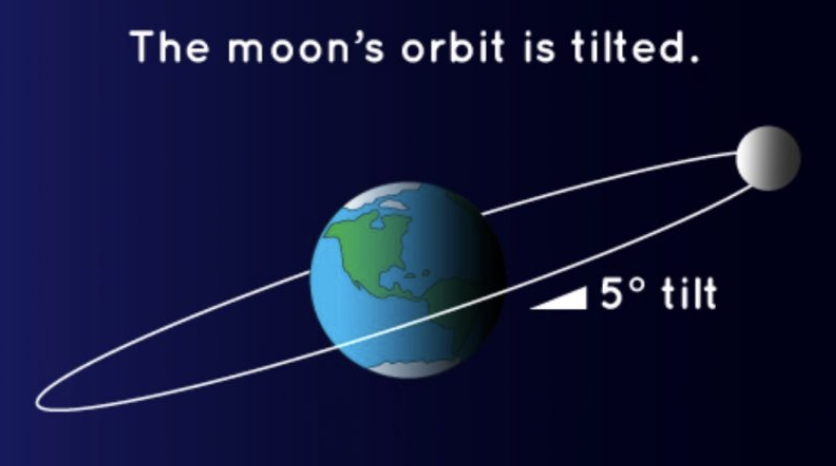
What are the different types of solar eclipses?
The first type of solar eclipse is a total solar eclipse, which occurs when the moon appears to block all of the light from the sun.
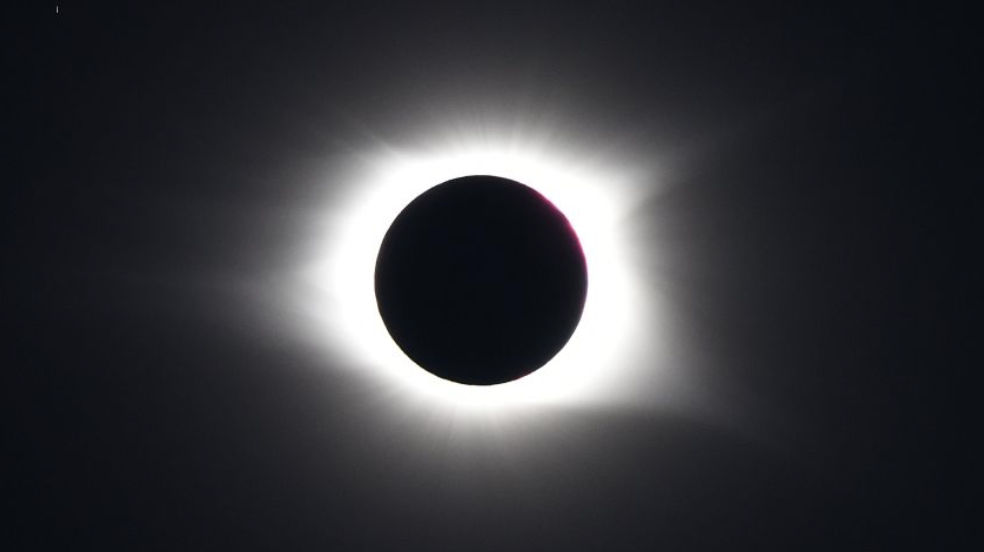
The second type of solar eclipse is an annular solar eclipse. This occurs when the Moon passes over the center of the sun, however, the moon is a bit farther from the Earth in its orbit. Because of this, the moon doesn’t completely block out the sun and it leaves an apparent ring, also known as an annulus, of light in the sky.
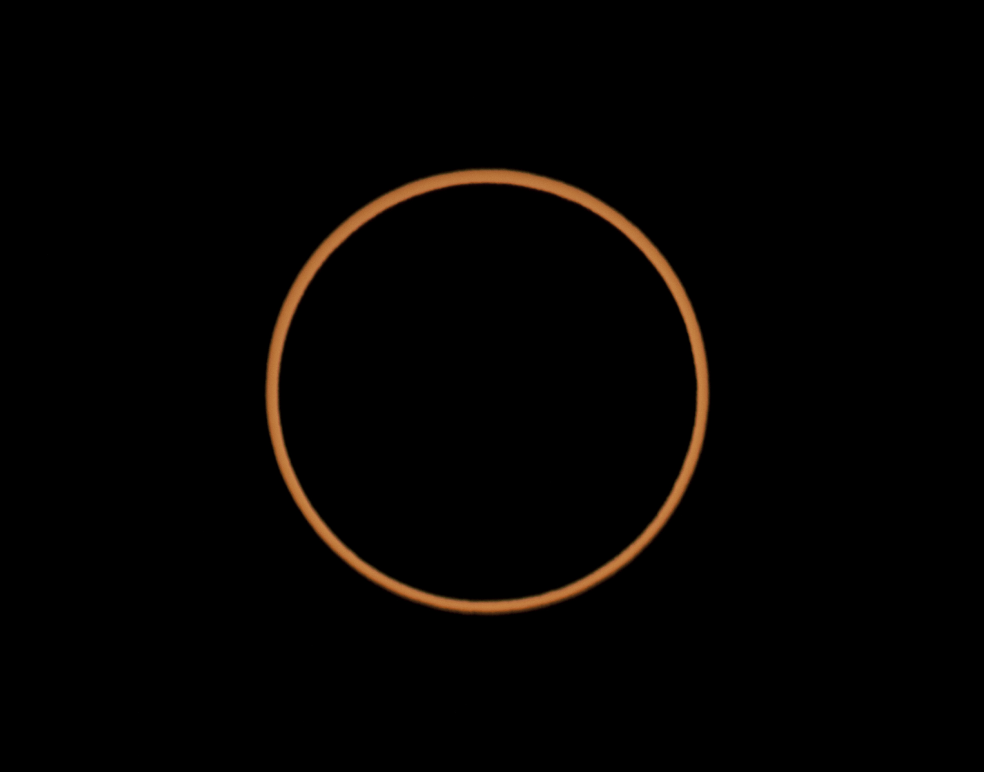
An annular solar eclipse. View image source
Each of these eclipses can have a partial form of it. This partial form can occur when the moon is not properly lined up with the sun and can cause only a portion of the Sun’s light to be blocked. These are known as partial solar eclipses and partial annular eclipses.
What will we see in Idaho?
Since the shadow of the moon is so small compared to Earth, only people on the East Coast in the “Path of Totality” will be able to see the Sun completely blocked out. However, don’t be dejected! While we won’t see a total solar eclipse in Idaho, we will be able to see a partial eclipse. How partial your view is depends on your location in Idaho.
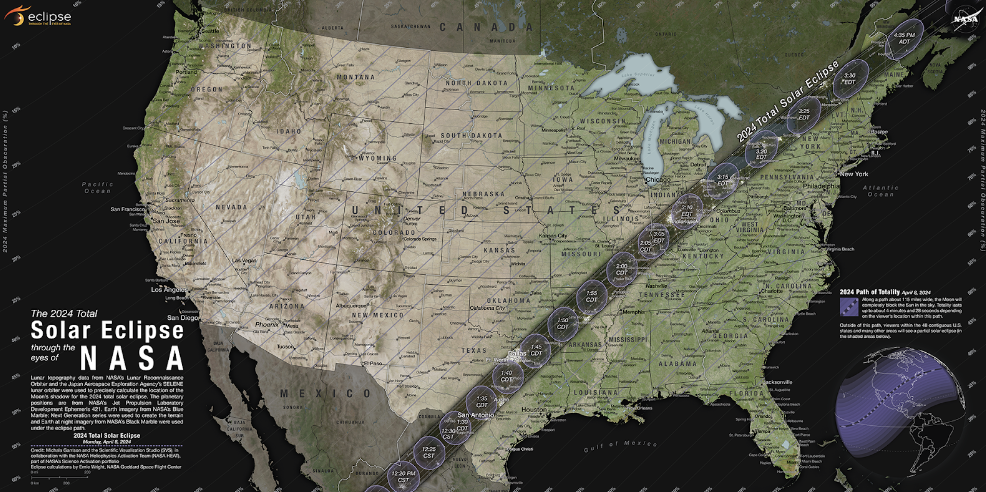
Path of the total solar eclipse for April 8th. View image source
If you’d like to find out more about how the eclipse would look for your location, you can use this interactive eclipse map to determine how your view will be. For example, in Boise we will have a 35% obscuration, meaning 35% of the Sun will be blocked by the moon. This map will also tell you the start, peak, and end of the partial eclipse. This time is in Universal Time (UT), to convert it to Mountain Standard Time (MST) subtract six hours.
How can I observe?
Since in Idaho, we will only be able to observe a partial solar eclipse, the Sun will not be completely blocked by the Sun. This means it is unsafe to look directly at the sun throughout the entire eclipse!
The best and safest way to look at the sun would be to use proper equipment! Since we will only receive about 35% obscuration in Boise, you will most likely not be capable of seeing the eclipse with your unaided eyes. The most accessible way to observe the eclipse safely would be using eclipse shades. Eclipse shades are available for donation through the astronomy program in the Boise State Physics Department.
If you want to use a telescope to observe the eclipse, make sure you do not have it pointed at the sun unless you have the right kind of filter! If you use a telescope without a solar filter, the sunlight will enter the telescope, get magnified on the mirrors, and catch your telescope on fire. Think of sunlight going through a magnifying glass and creating a fire. Furthermore, be sure to not look through a telescope at the sun without the correct filters. It will severely damage your eyesight.
How can I participate?
This total solar eclipse appears to be the last total solar eclipse that will cross the United States until 2045. Because of this, there are a few ways to participate in this important event!
There will be a livestream hosted by the National Science Foundation (NSF) of the eclipse featuring science behind the sun and the eclipse. Here you can listen to real scientists and explore some of the facilities they utilize.
If you would like your classroom or school to participate in the excitement of the eclipse, feel free to reach out to Boise State’s AstroTAC team and participate in some of our eclipse activities. AstroTAC is a NASA-funded outreach program that travels around the entire state of Idaho to teach NASA educational content to students of all ages for free.
Besides just observing individually, The Boise State Physics Department will be hosting an eclipse observing event on campus on Monday, April 8th from 11 AM – 1 PM with solar scopes.
Article written by Chandler Beasley, 2024 AstroTAC member.